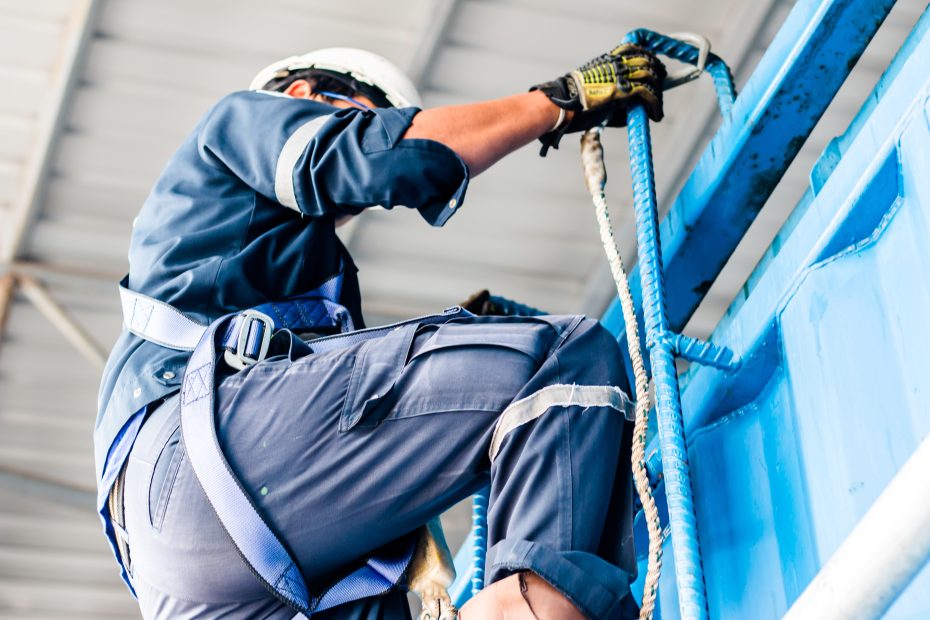What is considered working at heights in Australia?
In Australia, working at heights generally refers to any task performed where there is a risk of a fall from one level to another, including falls from ladders, scaffolding, roofs, or other elevated platforms. Even tasks conducted near openings, edges, or fragile surfaces are considered working at heights.
Legislation surrounding working at heights
The primary legislation governing working at heights in Australia is the Work Health and Safety (WHS) Act 2011, along with the associated Work Health and Safety Regulations 2011. These regulations impose duties on employers, workers, and others involved in workplaces to ensure health and safety.
Under the WHS Act, employers have a duty of care to provide a safe working environment, which includes implementing measures to prevent falls from heights. This duty extends to ensuring that workers are adequately trained and equipped to perform tasks safely.
Skills, permits and training
Working at heights requires specific skills, permits, and training to mitigate risks effectively. Some of the key requirements include:
1. Working at heights training: Workers must undergo comprehensive training specific to working at heights. This training covers topics such as hazard identification, risk assessment, selection, and use of appropriate fall protection equipment, and emergency procedures.
2. Competency assessment: Employers should assess the competency of workers before allowing them to work at heights. This may involve practical assessments to ensure that workers can safely perform tasks at elevated levels.
3. Use of fall protection equipment: Workers must be trained in the correct use fall protection equipment such as harnesses, lanyards, and anchor points. Regular inspection and maintenance of this equipment are also essential to ensure its effectiveness.
4. Permits and licencing: Depending on the jurisdiction and the nature of the work, workers may require specific permits or licences to perform tasks at heights. For example, individuals operating boom lifts or scaffolding may need to hold relevant licences.
Emergency response training: Workers should be trained in emergency response procedures, including rescue techniques for themselves and their colleagues in the event of a fall or other accidents.
Employer responsibilities
Employers have a crucial role in ensuring the safety of workers who perform tasks at heights. Some of their responsibilities include:
1. Risk assessment: Employers must conduct thorough risk assessments before any work at heights commences. This involves identifying potential hazards, assessing risks, and implementing control measures to eliminate or minimise these risks.
2. Provide a safe work environment: Employers must provide safe systems of work, including appropriate access equipment, guardrails, and fall protection systems. They should also ensure that all equipment is regularly inspected, maintained, and in good working condition.
3. Training and supervision: Employers are responsible for providing adequate training and supervision to workers involved in working at heights. This includes ensuring that workers understand the risks associated with their tasks and know how to use safety equipment correctly.
4. Emergency planning: Employers must have emergency response plans in place for workers performing tasks at heights. This includes procedures for raising the alarm, initiating rescue operations, and providing first aid as necessary.
5. Consultation and communication: Employers should consult with workers and their representatives on matters relating to working at heights. Effective communication ensures that workers are aware of risks and control measures, fostering a culture of safety in the workplace.
In conclusion, working at heights in Australia requires adherence to strict regulations, comprehensive training, and diligent oversight by employers. By prioritising safety and implementing robust safety measures, employers can mitigate risks and ensure the well-being of workers performing tasks at elevated levels.
Don’t forget to visit our Blog page for more articles on other interesting topics.
If you want to stay informed on working at heights and related subjects, take a look at our safety courses available here and if you’re looking for safety equipment for your business or home, we have a great range you can shop online here.
